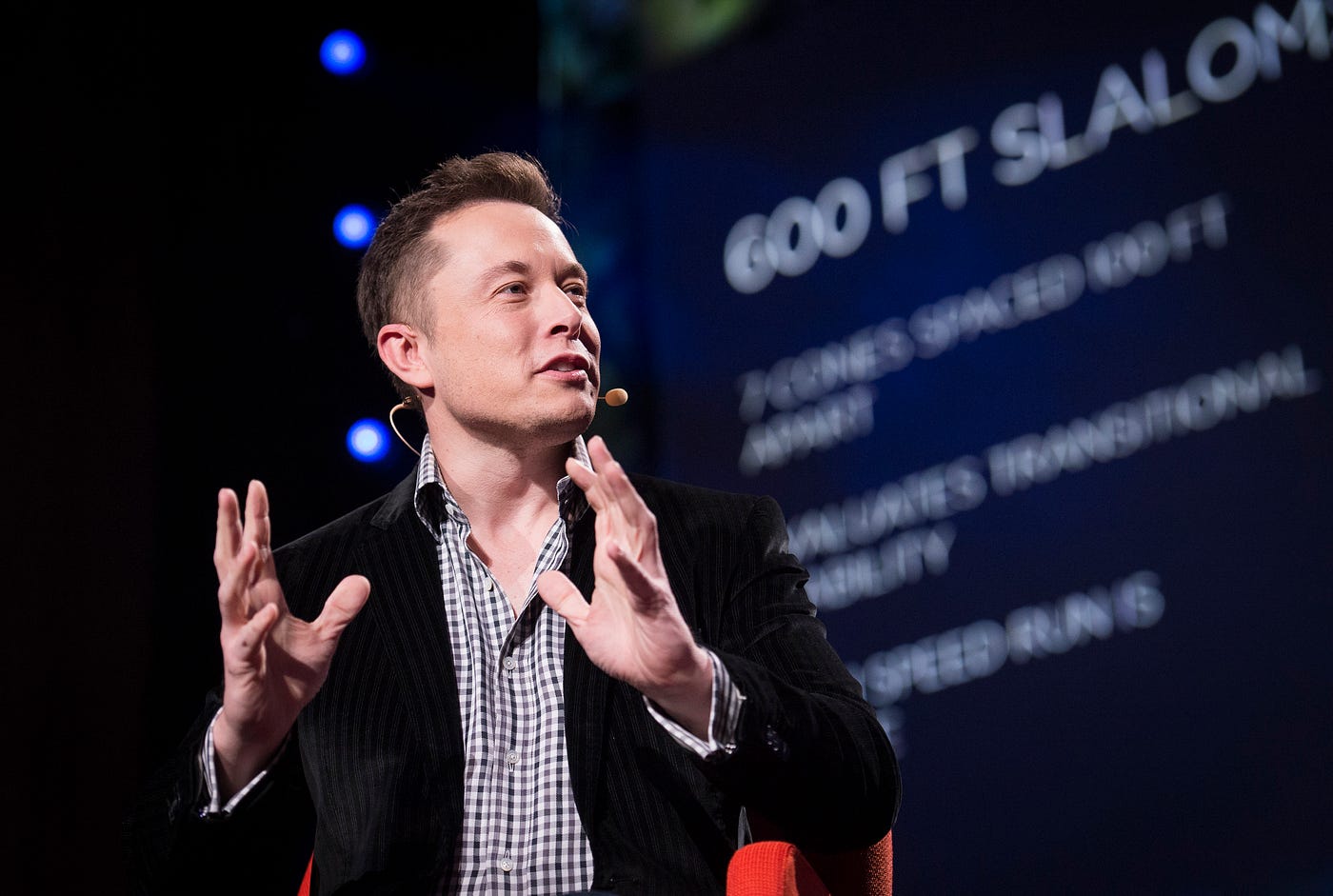4 Things Elon Musk Gets Right About High Performance – And 4 Things He Doesn’t

Elon Musk has become a polarising figure in the world of business. His questionable ‘hardcore’ work strategies – 100+ hour weeks and a ‘no vacation’ policy – made me hesitant about copying anything from the Musk playbook.
But then I read Walter Isaacson’s biography of Musk, and I came away fascinated by Musk’s complex mind, engineering wizardry, and doomsday determination. And – yes – some of his performance strategies.
The ‘Musk effect’
Dissecting Musk’s methods reveals a mix of madness and genius. Here’s what he gets right about high performance.
1. Create wicked momentum
Humans have an incredible ability to get things done – but usually we need a push. When Musk gets frustrated at the speed of a project, he mounts a “surge” – an audacious deadline to build momentum.
A humanoid robot not advancing fast enough? Launch it publicly in two weeks.
Rocket launch pad slow to finish? Get it done by sundown tomorrow.
Moving a server farm takes six months? You’ve got two weeks.
Momentum is crucial for performance. Momentum gives energy, forces decision-making, and glues together a team. Musk’s maniacal sense of urgency borders on the frankly outrageous – but the truth is: things get done.
While we can’t all operate at Musk-speed, we can ask ourselves: How can we create our own “surge” in productivity? How can we achieve momentum, small wins, positive performance pressure?
Have you ever set a seemingly impossible deadline and surprised yourself with the result?
2. Ask “why” – repeatedly
Some critics of Musk say he’s invented little truly new technology. We had space rockets in the 60’s and electric engines for an, in retrospect, embarrassingly long time. Is Musk’s contribution mainly stripping down existing technology and mass-producing it?
Whatever the answer is, boy is he good at it. Before Musk started asking ‘why’, the space tech industry was bloated. ‘Rocket’ is (was) to technology what ‘wedding’ is to parties – a great way to mark up the price of the components.
Musk uses an ‘idiot index’ – how much more costly a finished product is compared to the cost of its basic material. High idiot index, high cost reduction potential.
For example: A $2 million crane to lift the Falcon 9 was built from scratch for $300k. Latches for the Space Station that cost $1,500 each were built for $30 by modelling bathroom stall latches.
Musk and his team challenged the status quo by asking ‘why’ repeatedly: Why is this a requirement? Who created it? Is it still valid? What’s the worst possible outcome?
Think about your own industry: What ‘idiot index’ might you uncover? Is there an instance when questioning a ‘given’ in your field led to a breakthrough? If not, perhaps it’s time to bring in an outsider to ask the ‘stupid’ questions.
3. Love your customer, love your product
“True product people have a compulsion to sell directly to consumers,” Musk says. Loving your customer for Musk means creating value, and often, that means simplifying.
At PayPal he honed each keystroke to drastically simplify signup. About solar panels he said “I hate this product. It’s so ugly” which paved the way for a sleek, elegant solar roof.
At Neuralink, the team had a brain device with four chips, wires, and a router. Musk hated it: “It has to be a single device – no wires, no connections, no router”. Impossible, said the team. Yet, a few weeks later, the team had a prototype – and they were excited about it.
Musk’s mantra of end-to-end accountability and customer obsession – where the team feels the immediate customer pain when something doesn’t work – has led to ground-breaking products. Reflect on your work: How closely do you listen to your customers, and how has their feedback shaped your product or service?
4. One metric
Musk’s focus on simplicity extends to KPIs. He advocates for one metric – one North Star – to guide product innovation.
At SpaceX, faced with the need to reduce cost, Musk’s singular metric was the “cost to launch one pound of payload into orbit”. This laser-like focus, paradoxically, allowed SpaceX to tackle the problem holistically: enhancing engine thrust, reducing rocket mass, pioneering reusable rocket technology, etc.
At Tesla, Musk’s one metric is “number of miles driven on Autopilot without human intervention”.
Musk’s one metric isn’t just about simplicity; it’s about a culture of accountability and continuous innovation. By aligning teams around a singular goal, Musk encourages cross-functional collaboration and empowers individuals to explore creative solutions.
Think about your own product or company: is there a North Star of innovation to rally around?
Musk’s double-edged sword
Musk’s undoubted brilliance aside, it comes with a dash of madness. Here are a few areas where we should think twice about copying him.
1. Burnout is real
This should be obvious, but isn’t.
Isaacson’s book details multiple stories of Musk executives being fired, quitting, or burning out. “He treated me like a child,” one says. “I think I have PTSD,” says another. One reflects further, “You definitely realise that you’re a tool being used … [and] sometimes tools get worn down and he feels he can just replace the tool.”
Burning out brilliant executives may work for Musk who seems to have a bottomless pool of talent eager to work for him. Most companies do not.
2. Chronic stress has severe consequences
Throughout the book, Musk himself experiences crazy health symptoms – mood swings, depression, violent stomach pains, intense heartburn. At one point he even asks his biographer for recommendations for a doctor. “He can pretend to like stress, but his stomach can’t”, writes Isaacson.
3. ‘Action addiction’ is not a good way to live
After a success – rocket launched, car in production, goal achieved – Musk seems unable to feel joy.
When he’s with his family, he quickly retreats into work. He appears addicted to action, unable to pause. This translates into digital addiction. When a friend locks Musk’s phone in the hotel safe for the night so he can’t tweet, Musk ends up summoning hotel security at 3am to crack open the safe.
Admittedly, my own phone sometimes seems glued to my hand. Reading about Musk’s obsession and what it does to his relationships has made me think twice.
4. Fear is a poor motivator
There are many sources of motivation more powerful than fear: intrinsic motivation, rewards, recognition and autonomy for example.
But a lesser mentioned downside of fear is you end up surrounded by “Yes, sir” people. Having faced Musk’s rage after bringing up objections or problems, people stop doing it. Increasingly, you become cocooned in a veil of “Of course, sir”, “Consider it done, boss”, and over time, you may lose out on that very thing which made you successful – hearing and feeling the customer pain, the only thing that allows you to fix it.
Musk is CEO of six companies: Tesla, SpaceX, Neuralink, The Boring Company, X and X.AI. Perhaps one reason why these companies are so successful is precisely because there are so many.
Why? Each company gets its share of Musk brilliance – but when his manic “surge” energy is focused on one, the others get a break from the negatives. Would his approach work if there were only one or two companies to shoulder the madness?
Finding balance in the shadows of Musk and Jobs
Isaacson was also the biographer of Steve Jobs, and with both Musk and Jobs, their bad behavior and brilliance seem to come as a package – they cannot be separated. The challenges with this are the bad bosses who aim for high performance, and use Musk’s and Job’s example as a blank cheque to treat people badly.
The next time you see that happening, remind them it’s a package.
Everyone should copy the wicked momentum, questioning, customer obsession, and singular metric. But, unless you truly are a once-in-a-generation entrepreneur with an audacious goal akin to taking humanity to Mars, it’s best to drop the bad behaviour. For all non-Musks out there, it better to act in line with the integrated science of wellbeing and high performance.



